RMT2012

Overview | Program | Lecturers | Organizers
- Term: April 15 - April 21, 2012
- Location: OIST Seaside House
- Organizer: S. Hikami (Mathematical and Theoretical Physics Unit, OIST)
- Co-organizers:
- E. Brezin (ENS)
- H. Sompolinsky (Hebrew)
- J. Miller (Physics and Biology Unit, OIST)
Overview
- Neural network and memory, spin glass, communication networks.
- Genes analysis, co-expression of DNA, protein, bioinformatics.
- Protein folding, topology, secondary structure of RNA and other biological applications.
- Condensed matter application, BEC, quantum dots, quantum chaos, topological insulator, universal class.
- RMT and field theory, conformal field theory, AdS/CFT.
- Mathematical aspect of RMT.
Program
| Date / Time | ||
|---|---|---|
| April 14 (Sat) | ||
| Registration | 1F Lobby | |
| 18:00-20:00 | Dinner | 3F Chura Hall |
| April 15 (Sun) | ||
| 07:00-09:00 | Breakfast | 3F Chura Hall |
| 09:00-12:00 | Lecture (E. Brezin) | 1F Seminar Room |
| 12:00-14:00 | Lunch | 3F Chura Hall |
| 14:00-17:00 | Lecture (R. Monasson) | 1F Seminar Room |
| 18:00-20:00 | Dinner | 3F Chura Hall |
| April 16 (Mon) | ||
| 07:00-09:00 | Breakfast | 3F Chura Hall |
| 09:00-12:00 | Lecture (A. Morozov) | 1F Seminar Room |
| 12:00-14:00 | Lunch | 3F Chura Hall |
| 14:00-17:00 | Lecture (S. Ganguli) | 1F Seminar Room |
| 18:00-20:00 | Dinner | 3F Chura Hall |
| April 17 (Tue) | ||
| 07:00-09:00 | Breakfast | 3F Chura Hall |
| 09:00-12:00 | Lecture (P. Wiegmann) | 1F Seminar Room |
| 12:00-14:00 | Lunch | 3F Chura Hall |
| 14:00-16:30 | Poster Session | 1F Lobby |
| 17:00-18:00 | Campus Tour | OIST Campus |
| 18:00-20:00 | Dinner | 3F Chura Hall |
| April 18 (Wed) | ||
| 07:00-09:00 | Breakfast | 3F Chura Hall |
| 09:00-12:00 | Lecture (J. Zinn-Justin) | 1F Seminar Room |
| 12:00-14:00 | Lunch | 3F Chura Hall |
| 14:00-17:00 | Lecture (H. Sompolinsky) | 1F Seminar Room |
| 18:00-20:00 | Banquet | 3F Chura Hall |
| April 19 (Thr) | ||
| 07:00-09:00 | Breakfast | 3F Chura Hall |
| 09:00-12:00 | Lecture (S. Cocco) | 1F Seminar Room |
| 12:00-14:00 | Lunch | 3F Chura Hall |
| 14:00-17:00 | Lecture (M. Vergassola) | 1F Seminar Room |
| 18:00-20:00 | Dinner | 3F Chura Hall |
| April 20 (Fri) | ||
| 07:00-09:00 | Breakfast | 3F Chura Hall |
| 09:00-12:00 | Lecture (J. Miller) | 1F Seminar Room |
| 12:00-14:00 | Lunch | 3F Chura Hall |
| 14:00-18:00 | Excursion | Okinawa Churaumi Aquarium |
| 18:00-20:00 | Dinner | 3F Chura Hall |
| April 21 (Sat) | ||
| 07:00-09:00 | Breakfast | 3F Chura Hall |
| Departure |
Lecturers
 |
Edouard Brézin Edouard Brézin has done work in quantum fieldtheory, mainly for applications in statistical physics, in particular for critical phenomena. He hasapplied field theory techniques to condensed matter problemssuch as the theory of critical wetting, localization by disorder or the study of the phase transition from anormal metal to a type II superconductor under a magnetic field. He has beeninterested in field theories with a large number of colors. This has led to arepresentation of two-dimensional quantum gravity, random fluctuating surfaces,i.e. bosonic closed string theories, in terms of random matrices. The scaling limit ofsuch models is related to integrable hierarchies such as KdV flows. He has worked on theuniversality of the correlations of eigenvalues in the local limit for random matrices and on the application of random matrices to topological properties of curves (work with S. Hikami). He is a former president of the French Academy of Sciences and a foreign member of the National Academy of Sciences (USA) and of the Royal Society (UK). He has shared the Dirac medal in 2011with J. Cardy and A. Zamolodchikov. Recommended books, papers for the students and participants :
* Lecture title : A brief introduction to random matrices |
 |
Simona Cocco Simona Cocco did her undergraduate studies in physics at the University of Rome (Italy) and did a PhD in physics and biophysics in Rome and Lyon (France). She has a position as a researcher in the CNRS in France, from 2001. * Lecture title : Inference of interactions from correlations: algorithms and applications |
 |
Remi Monasson R. Monasson got his PhD in theoretical physics at the Ecole Normale Superieure in 1993, and was a post-doc in Rome until 1995. After getting a position at CNRS, he spent two sabbatical, at the University of Chicago in 2000/2001 and at the Institute for Advanced Study, Princeton, in 2009/2011. His research are at the crossroads between the statistical physics of disordered systems, and its interdisciplinary applications to computer science (study of phase transitions in combinatorial optimization problems with random inputs, learning in neural networks models) and biophysics (modeling of single molecule experiments, high-dimensional statistical inference). * Lecture title :Statistical physics approaches to high-dimensional inference
|
 |
Alexei Morozov Main research interests: Recommended books, papers for the students and participants :
* Lecture title :Faces of matrix models |
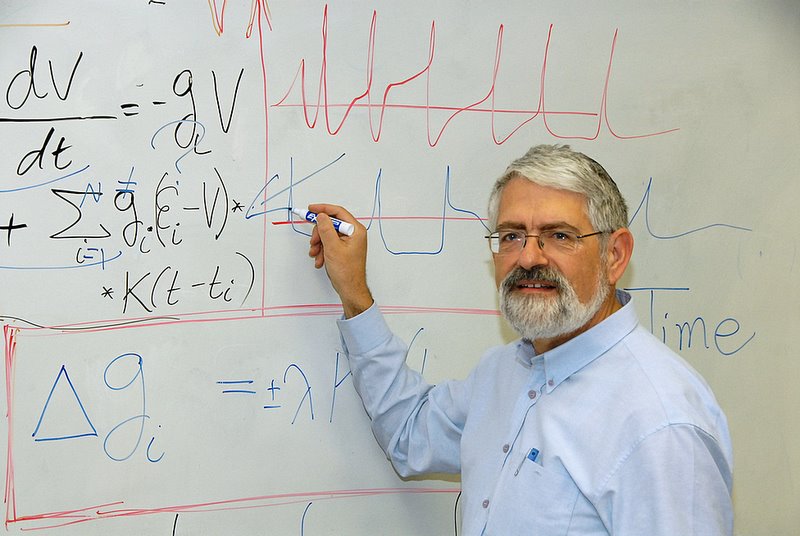 |
H. Sompolinsky Haim Sompolinsky is a Professor of Physics and William N. Skirball Professor of Neuroscience at the Hebrew University. He is a founding member of the Interdisciplinary Center for Neural Computation (ICNC) and of the newly established Edmond and Lily Safra Center for Brain Sciences (ELSC). Sompolinsky serves as the Director of the Swartz Program for Theoretical Neuroscience at Harvard University and is an Honorary Foreign Member of the American Academy of Arts and Sciences. * Lecture title : Neuronal Circuits with Random Connectivity * References:
|
|
J. Zinn-Justin Lecture title: RANDOM MATRIX AND RANDOM VECTOR THEORY: THE RENORMALIZATION GROUP APPROACH Abstract: The realization that some ensembles of random matrices in the large size and the so-called double scaling limit could be used as toy models for quantum gravity has resulted in a tremendous expansion of random matrix theory. However, the somewhat paradoxical situation is that either models can be solved exactly or very little can be said. Since the solved models display critical points and \Red{universal properties}, it is tempting to use renormalization group (RG) ideas to reproduce universal properties, without solving models explicitly. The main ideas behind this approach are recalled here. The approach has led to encouraging results but has not yet become a universal tool as initially expected. In particular, no progress has been made for problems of quantum field theories with matrix fields. To illustrate some of the difficulties one meets, we apply in the second part of this talk the same ideas to O(N) symmetric vector models, models which can quite generally be solved in the large N limit. |
|
|
P. Wiegmann Lecture title: Random Matrices, Growth models and hydrodynamic singularities. Abstract: A broad class of non-equilibrium growth processes in two dimensions have a common law : |
|
|
M. Vergassola
*Lecture title1: Statistics of the maximum eigenvalue in random matrices *Abstract: Challenges faced by living organisms trying to locate and move towards sources of nutrients, odors, pheromones, etc., will be discussed. Macro-organisms, such as insects and birds, lack local cues because chaotic mixing breaks up regions of high concentration into random and disconnected patches, carried by winds and currents. Thus, macroscopic animals detect patches very intermittently and have to rely on strategies more elaborate than gradient-climbing. Conversely, microorganisms, such as bacteria performing chemotaxis, can rely on local concentration cues, yet they have to cope with the stochastic nature of their microscopic world. The bacterial chemotactic response appears indeed to emerge from selective adaptation to strong fluctuations in the environments that bacterial populations experience. |
|
 |
Surya Ganguli
*Lecture title: The statistical mechanics of compressed sensing and memory through random matrices. |
Participants
 |
Institute of Theoretical Physics, Cologne University
|
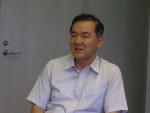 |
Professor of Department of Biomedical Engineering, Toyo University
* poster title: Quantum ergodicity of Eisenstein series in the level aspect. * authors: Shin-ya Koyama and Sachiko Nakajima * abstract: Quantum ergodicity is an equidistribution property of eigenfunctions for the Laplacian over a manifold as the spectrum grows. Luo and Sarnak proved it for Eisenstein series over arithmetic surfaces. |
 |
Zoran Ristivojevic Postdoctoral Fellow, LPT Ecole Normale Superieure, Paris, France I am interested in different systems where low-dimensional physics is realized, that include quantum wires, edges of quantum Hall states and cold atomic gases. I am also interested in certain aspects of some models of statistical physics that include disordered XY models.
|
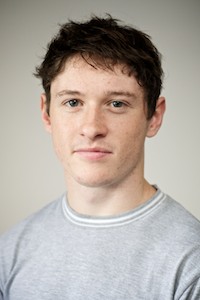 |
I'm 22 years old My interested field of study is the application of random matrices to the study of biology
|
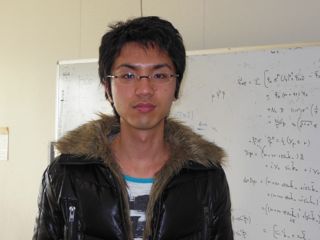 |
RIKEN Nishina Center Mathematical Physics Laboratory I am a postdoctoral fellow at Mathematical Physics Laboratory,RIKEN. A main research topic is the study of supersymmetric gauge theory and its relation to random matrix theory. I am now exploring the remarkable relationship between 2d conformal field theory and 4d gauge theory, which is called the AGT relation, through their matrix model descriptions. The matrix model is derived from the combinatorial expression of the gauge theory partition function by considering its asymptotic behavior. I'm also interested in other topics, lattice gauge theory, vortex theory, quantum Hall effect, topological insulator and so on.
|
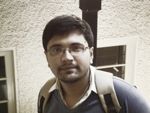 |
Ranjan Modak DEPARTMENT OF PHYSICS, THEORETICAL CONDENSED MATTER,INDIAN INSTITUTE OF SCIENCE PROFILE: I did my B.Sc from Jadavpur University,Kolkata.I have completed my M.Sc from IIT Kharagpur. Presently I am doing PhD in Department of Physics,Indian Institute of Science (IISc) ,Bangalore under the guidance of Prof. Sriram Ramaswamy and Prof. Subroto Mukerjee. Research Interest: Thermalization of Quantum system and transport properties of integrable and non-integrable systems.
|
 |
Second-year PhD student of Physics at the U. of Tokyo, Miyashita Group * Poster Title : Dyson's model as a special case of Dunkl processes and Dunkl's intertwining operators
|
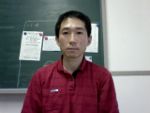 |
Fumihiko NAKANO Department of Mathematics, Gakushuin University, Japan. * Poster Title : The level statistics of one-dimensional Schroedinger operator with random decaying potential. * Abstract : We study the level statistics problem of the one-dimensional Schr\"dingier operator with random potential decaying like $x^{-\alpha}$ at infinity. The results obtained so far is summarized as follows :
|
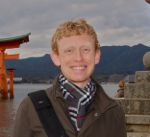 |
Foreign Postdoctoral Researcher Laboratory for Systems Biology RIKEN Center for Developmental Biology 2-2-3 Minatojima-minamimachi, Chuo-ku, Kobe-shi 650-0047 Japan Lab phone: +81-78-306-3191 e-mail: jolleycraig@gmail.com
* Poster Title :Random Matrix Theory and Systems Biology: Some possible directions
|
 |
PROFILE:I am a third year graduate student at University of California, Davis under the guidance of Craig Tracy. My research general research areas are interacting particle systems and statistical mechanics. I have previously studied Heisenberg’s XXZ model and its relationship to the asymmetric simple exclusion process via unitary transformation of their matrix generators. Currently, I am working on Lieb and Liniger’s model of Bose gas subject to hard wall boundary conditions for attractive particles.
|
|
Chushun Tian Professor of Institute for Advanced Study, Tsinghua University, Beijing Research interests: disordered systems, quantum chaos, and strongly correlated electron systems.
|
|
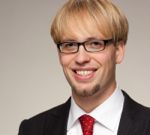 |
Jan Dahlhaus PhD student of theoretical physics at the Lorentz Institute,Leiden University, The Netherlands
* Poster Title :Random matrix theory of transport in topological superconductors * Abstract :Topological superconductors are realizations of a new phase of matter that has been theoretically predicted recently and probably be found experimentally (still controversial). They are characterized by topological invariants - integer numbers that can only change when the system undergoes a quantum phase transition. The electrical transport properties of a junction between a metal and a topological superconductor can be described by a unitary scattering matrix. We investigate the situation that the junction is disordered and of irregular shape such that its electronic dynamics are chaotic. An average over different disorder realizations can then be obtained by averaging over the circular random matrix ensemble of scattering matrices that are allowed by the symmetries of the system. In our work we investigate the influence of the topological invariant on the conductance statistics of the junction.
|
 |
PROFILE:Graduate student, Physics and Astronomy, UBC My research interest is mathematical physics (operator theory, topological approach to quantum mechanics etc.)and theoretical physics (large-scale quantum mechanics, decoherence, quantum mechanics and gravity)
|
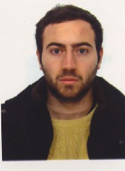 |
Jacopo Iacovacci PROFILE: Biophysics Student, University of Rome, ‘La Sapienza’ I’m a 23 student working on my master thesis in biophysics at the University of Rome ‘La Sapienza’.
|
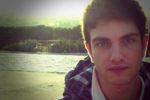 |
Ulisse Ferrari PROFILE: PhD student at "La Sapienza" (Rome, Italy) * poster title: On the critical slowing down exponents of mode coupling theory * authors: F. Caltagirone, U. Ferrari, L. Leuzzi, G. Parisi, T. Rizzo * abstract: An important prediction of Mode-Coupling-Theory (MCT) is the relationship between the decay exponents in the $\beta$ regime: ${\Gamma^2(1-a) \over \Gamma(1-2 a)}={\Gamma^2(1+b) \over \Gamma(1+2b)}=\lambda $.
|
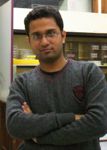 |
PROFILE: * poster title: Random matrix theory and gene correlation coefficient statistics of DNA-microarray data: Application in understanding the system biology of gene regulation * authors: Debayan Dey, S. Ramakumar * abstract: The fundamental question in biology is to understand the mechanism by which a cell functions. The gene regulation of a cell and its interaction with environment & other cells makes a complex living organism. Gene regulation is the key process which dictates cell function and any imbalance in it results into disease. Understanding gene regulation using high throughput methods are pivotal to understand the holistic nature of gene regulatory network. But it suffers from large embedded noise within it; so a noise reduction method is very important to deduce sensible biological information which further can be experimentally tested. DNA-microarray technique provides gene expression level data for the whole cell’s activity at a given time. The understanding of gene correlation matrix provided by the data is essential for biological elucidation of gene regulatory network.
|
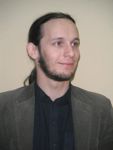 |
Artur Święch PROFILE: I'm studying theoretical physics on masters studies at Jagiellonian University, Krakow,. My main research interests are spectra of products of random matrices in thermodynamical limit. Currently I'm also involved in analysis of data from Collider Detector at Fermilab, i.e. events with forward rapidity gaps. * poster title:Eigenvalues and Singular Values of Products of Rectangular Gaussian Random Matrices * authors: Z. Burda, A. Jarosz, G. Livan, M. A. Nowak and A. Swiech * abstract: We analyze spectra of products of arbitrary number of rectangular Gaussian random matrices in two cases: 1. Singular value spectra - using Free Random Variable calculus. 2. Eigenvalue spectra - using planar diagrammatics. We derive analytical expressions describing those spectra in thermodynamical limit and we propose corrections for finite sizes of matrices. The behavior of eigenvalue and singular value distributions near zero is determined to be power-law. The results are compared to numerical simulations of large random matrices.
|
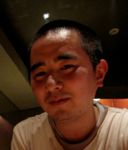 |
Yutaka Shikano PROFILE: I am the research associate professor at Institute for Molecular Science. My main research interest is the foundations of quantum mechanics, especially the quantum measurement theory, discrete time quantum walk, which is related to the quantum chaos, and the quasi-particle condensation. * poster title: On Inhomogeneous Quantum Walks with Self-Duality * author: Yutaka Shikano and Hosho Katsura * abstract: We introduce and study a class of discrete-time quantum walks on a one-dimensional lattice. In contrast to the standard homogeneous quantum walks, coin operators are inhomogeneous and depend on their positions in this class of models. The models are shown to be self-dual with respect to the Fourier transform, which is analogous to the Aubry-Andr\'e model describing the one-dimensional tight-binding model with a quasi-periodic potential. When the period of coin operators is incommensurate to the lattice spacing, we rigorously show that the limit distribution of the quantum walk is localized at the origin. We also numerically study the eigenvalues of the one-step time evolution operator and find the Hofstadter butterfly spectrum which indicates the fractal nature of this class of quantum walks.
|
|
Name PROFILE: * poster title: * author: * abstract:
|
Organizers
 |
Physics and Biology Unit, OIST Lecture title: Tails of Genome Evolution |
 |
Mathematical and Theoretical Physics Unit, OIST |



